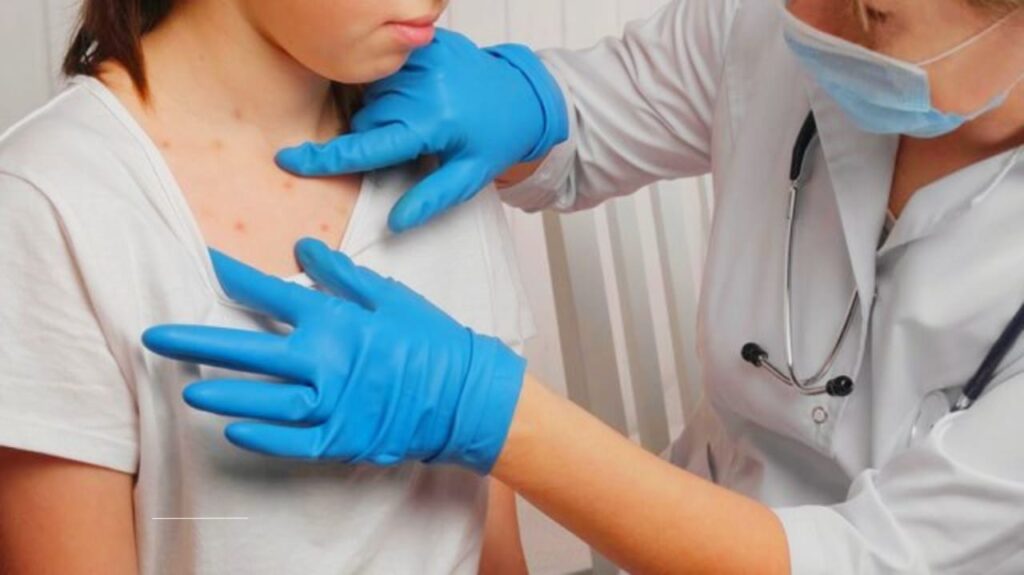
Measles, a disease once declared eliminated in the United States, is making a troubling comeback. Over the past year, Kansas, Ohio, and Texas have reported significant spikes in cases, leaving public health experts alarmed. The resurgence of this highly contagious virus highlights vulnerabilities in vaccination rates, gaps in public awareness, and the dangers of misinformation. Let’s break down what’s happening, why it matters, and how communities can protect themselves.
Measles spreads through the air when an infected person coughs or sneezes. The virus can linger in a room for up to two hours, making it one of the most contagious pathogens known—far more so than influenza or COVID-19. Symptoms typically start with a high fever, cough, runny nose, and red, watery eyes. A few days later, a distinctive red rash appears, usually beginning at the hairline and spreading downward. While most people recover within weeks, measles can lead to severe complications, especially in children under five, pregnant women, and those with weakened immune systems. Pneumonia, brain swelling (encephalitis), and even death are possible. Before the measles vaccine was introduced in 1963, the virus killed an estimated 2.6 million people globally each year.
In Kansas, health officials confirmed 23 measles cases in the first three months of 2025, the highest number the state has seen in decades. Many of these cases emerged in rural communities with vaccination rates below the 95% threshold needed for herd immunity—the level required to prevent outbreaks. One cluster was traced to a local school where nearly 30% of students had non-medical vaccine exemptions due to religious or personal beliefs. “When vaccination rates drop, measles is often the first disease to reappear,” explains Dr. Sarah Lin, an infectious disease specialist at the University of Kansas. “It’s a canary in the coal mine for public health.”
Ohio faces a similar challenge. Outbreaks in Columbus and Cleveland have disproportionately affected low-income neighborhoods with limited access to healthcare. Here, vaccine hesitancy isn’t the only issue. Families juggling multiple jobs or lacking transportation often miss routine checkups where vaccines are administered. A recent study by the Ohio Department of Health found that 40% of measles cases occurred in children whose parents reported logistical barriers to vaccination, such as long clinic wait times or inability to take time off work. “This isn’t just about choice—it’s about equity,” says Dr. Marcus Torres, a pediatrician in Cleveland. “We need to meet families where they are, whether that’s offering evening clinics or mobile vaccine units.”
Texas, meanwhile, is grappling with a perfect storm of factors. The state allows philosophical exemptions from school vaccine requirements, and in some counties, exemption rates have doubled since 2020. A 2024 report by the Texas Medical Association revealed that only 88% of kindergarteners were fully vaccinated against measles, well below the national average of 93%. This decline has had consequences. In Houston, a single infected traveler returning from abroad led to 17 secondary cases within a month. Health workers raced to contain the outbreak, but misinformation on social media hampered their efforts. False claims linking the measles-mumps-rubella (MMR) vaccine to autism—thoroughly debunked by decades of research—resurfaced online, causing some parents to delay or refuse vaccines.
The MMR vaccine, first developed in the 1970s, is safe and highly effective. Two doses provide 97% protection against measles, and widespread vaccination has prevented an estimated 56 million deaths globally since 2000, according to the World Health Organization (WHO). Yet myths persist. A 2023 survey by the Annenberg Public Policy Center found that 25% of U.S. adults still believe the MMR vaccine causes autism, despite no scientific evidence supporting this. “Misinformation preys on fear,” says Dr. Alicia Nguyen, a vaccine researcher at Baylor College of Medicine. “Parents want to do what’s best for their kids, but when they’re bombarded with falsehoods, it creates unnecessary confusion and risk.”
The economic toll of measles outbreaks is also significant. A 2025 analysis by the Kansas Health Institute estimated that containing a single measles case costs up to $50,000 in public health resources—contact tracing, lab testing, and quarantines. For outbreaks involving dozens of cases, these costs soar into the millions. Schools and businesses face disruptions, too. In Texas, a daycare center temporarily closed after an exposure incident, leaving working parents scrambling for childcare.
Public health strategies to combat measles aren’t complicated, but they require coordination. First, improving vaccine access is critical. In Ohio, pop-up clinics at libraries and community centers have boosted vaccination rates in underserved areas. Kansas recently passed a bill requiring schools to publish their vaccination exemption rates online, increasing transparency. Texas, however, continues to debate stricter exemption policies. Second, countering misinformation demands creativity. Some clinics now training staff to address vaccine concerns during routine appointments, while organizations like the American Academy of Pediatrics share fact-based social media campaigns featuring trusted local doctors.
Doctors stress that measles isn’t a relic of the past. Global travel keeps the threat alive—cases in the U.S. often originate from unvaccinated travelers visiting countries where measles remains common. In 2024, global measles cases rose by 45%, driven by pandemic-related declines in childhood immunizations. “We’re interconnected,” says Dr. Lin. “An outbreak anywhere is a risk everywhere.”
For parents, the message is clear: Vaccination protects not just individual children but entire communities. Babies under 12 months can’t receive the MMR vaccine, leaving them reliant on herd immunity. The same applies to cancer patients undergoing chemotherapy or others with compromised immune systems. “Choosing to vaccinate is an act of compassion,” says Dr. Torres. “It’s how we shield the most vulnerable among us.”
As measles cases rise, so does urgency for action. Health departments in affected states are partnering with schools, faith leaders, and community groups to host vaccine drives. The CDC has also launched a national campaign emphasizing the MMR vaccine’s safety, sharing stories of families impacted by measles. Progress is possible. In Cincinnati, a 2024 measles outbreak was contained within weeks after health workers vaccinated over 1,000 people at free clinics.
The path forward hinges on rebuilding trust. A 2025 Pew Research study found that 72% of Americans still trust their healthcare providers for vaccine information—a sign that direct, empathetic conversations matter. Nurses and pediatricians are encouraged to listen to parents’ concerns without judgment, then offer clear, evidence-based answers. Small steps, like discussing vaccines during prenatal visits or at back-to-school physicals, can make a difference.
Measles is preventable, but eliminating it again will require a collective effort. From policymakers to parents, everyone has a role. Vaccines remain one of medicine’s greatest achievements—a tool that has saved countless lives. As outbreaks in Kansas, Ohio, and Texas show, letting our guard down has consequences. Protecting the progress we’ve made means staying informed, advocating for science, and prioritizing community health over misinformation.
